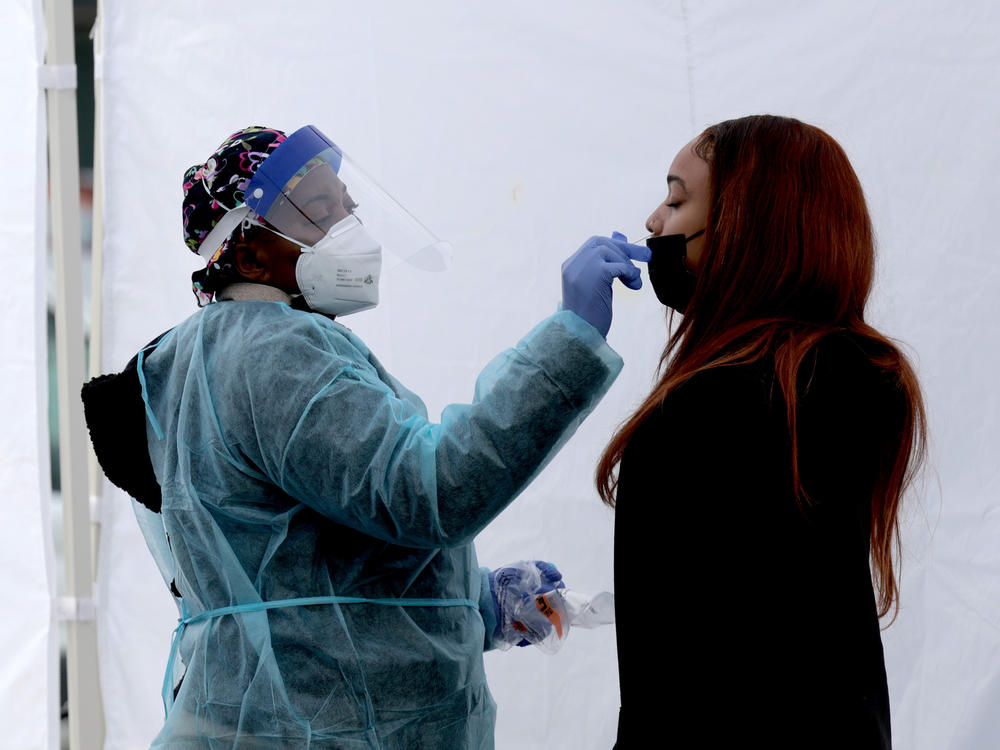Section Branding
Header Content
The CDC slashes estimates of omicron's prevalence in the U.S.
Primary Content
Alarms that the hyper-contagious omicron variant accounted for the vast majority of new COVID-19 infections over the past couple of weeks were significantly overestimated, according to the Centers for Disease Control and Prevention.
New data released on Tuesday shows that while omicron remains the dominant variant, delta — which is the more severe strain — is still a worrisome driving force behind the current surge.
The CDC had previously reported that as of Dec. 18, 73% of new cases were linked to omicron. But on Tuesday, the agency revised those figures, slashing that estimate to 23% — a 50-point drop, suggesting that while the new variant was on the rise, it was not infecting people at the rate the CDC had projected.
"There's no way around it, it is a huge swing that makes it seem like something went really wrong," Dr. Shruti Gohil, associate medical director for epidemiology and infection prevention at UC Irvine's School of Medicine, told NPR. "But there is always a delay in the testing information that comes in, and that's what the public should take away."
Omicron struck just as public health experts were getting their bearings on testing for the delta strain, Gohil said.
"The way in which we test and the way in which we have certitude about the numbers was all in flux right at that moment. Then along comes this new variant and now here you are trying to project something when you don't have all of the mechanisms in place," Gohil said.
The CDC's latest report adjusts the numbers and better reflects what was happening around the country at the time, she added.
The most recent report shows that as of Dec. 25, 59% of all U.S. infections were caused by omicron. Meanwhile, delta accounted for 41% of cases during the same period. And the number of those infections could be even higher, given the agency's margin of error on the collected data. The true figure could be as high as 58%.
Given the CDC's updated information, Gohil said, "The implication is that we have a lot of delta going on and that requires a lot more attention."
That is especially true for people who are becoming more lax in their preventive habits due to reports that omicron is the milder variant of the virus and carries a lower likelihood of being hospitalized than from delta.
"People are thinking, 'Oh, well, omicron's not that bad,'" she said. "But it's actually still too early to really know even that. Besides, delta is the beast that you should be worried about."
Until omicron came along, delta was the most contagious variant of the virus, and CDC studies suggested that it may be more likely to result in hospitalization in the unvaccinated than other strains.
Gohil adds that the CDC's new findings are also forcing hospitals to recalibrate because treating delta or omicron requires different antibodies and medications.
"The bottom line is, don't take your masks off just yet and get vaccinated, vaccinated, vaccinated, vaccinated — and boosted," Gohil said.
Copyright 2021 NPR. To see more, visit https://www.npr.org.

